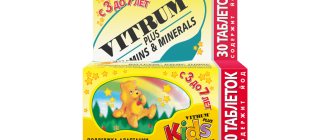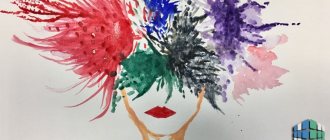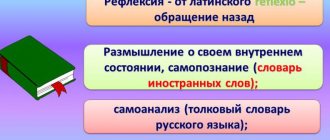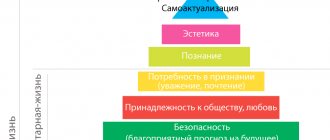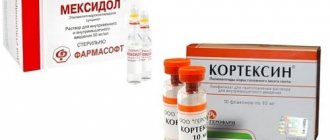Cortexin is a nootropic consisting of peptides. It is obtained by special preparation from the bark of cattle. The drug has neuroprotective and antioxidant properties. The use of Cortexin increases the resistance of nerve tissue to damaging influences such as toxins, chemicals, microbes and viruses. When using this drug, the processes of regeneration of central nervous system structures are accelerated, impulse transmission between neurons is improved. Due to this, the healing process for neurological diseases is significantly accelerated.
Cortexin as part of complex therapy is successfully used in the treatment of many pathologies, but the main indications for its use are:
- Circulatory disorders.
- Consequence of traumatic brain injury.
- Encephalopathies of various origins.
- Encephalitis, myelitis, encephalomyelitis.
- Epilepsy and convulsive syndrome.
- Asthenic condition (suprasegmental autonomic disorders).
- Cognitive disorders (disorders of memory, thinking and attention).
- Cerebral palsy.
- Delayed psychomotor and speech development in children.
- Reduced learning ability.
What is epilepsy?
One of the indications for the use of Cortexin is epilepsy and convulsive syndrome.
Epilepsy is a common disease of the nervous system that manifests itself in seizures, convulsions and loss of consciousness.
The causes of this pathology are varied: from organic lesions (stroke, traumatic brain injury) to hereditary predisposition. All this leads to increased excitability of certain areas of the cerebral cortex. The resulting impulses are excessively powerful and cover too large areas of nerve cells. Depending on the affected area, possible manifestations of epilepsy:
- Motor disorders.
- Changes in sensitivity (visual, auditory, tactile, olfactory, gustatory).
- Mixed form.
Symptoms of a disorder of the autonomic nervous system (increased sweating, redness of the skin) and disturbances in mental functions (speech, thinking, memory, emotional instability) may appear.
With a small area of pathological excitation, manifestations may be insignificant. However, when large areas of the cerebral cortex are involved in the process, the attacks become generalized.
Peptide bioregulators and their application: from neonatology to gerontology
The peptide drug Cortexin, which is a complex of natural low-molecular compounds from the brain of animals (a highly purified extract of nuclear proteins), continues to be one of the most widely discussed pharmacological agents in periodical medical press. At the same time, two aspects attract attention: firstly, the use of Cortexin by representatives of various medical specialties (multidisciplinary in the intended use of the drug), and secondly, the absence of age restrictions on its use. In the modern pharmacopoeia there are not too many similar drugs that do not have age-related contraindications and restrictions on use. Therefore, Cortexin, rightly called the “drug of the 21st century,” deserves more detailed consideration [1].
Categorization and composition of Cortexin
As you know, Cortexin belongs to the pharmacological group 9.7 (“Nootropics (neurometabolic stimulants)”). According to the ATC system (anatomical-therapeutic-chemical) classification, the drug belongs to the heading N06BX (“Other psychostimulants and nootropic drugs”). Among the x-class peptide drugs (cytogens, cytamins, cytomedins), Cortexin belongs to the cytomedins, which are a highly purified extract of nuclear proteins (fractions 1–10 kDa) and are characterized by a proven property of regulating immunological reactivity [2]. Cortexin is an innovative peptide drug; its substance and dosage forms are protected by patents of the Russian Federation (RF No. 2104702, 2275924, 2195297) and other countries.
Cortexin is a multicomponent drug, the composition of which is not limited to neuropeptide substances. In addition to neuropeptides, Cortexin ingredients are represented by no less than three groups of substances: amino acids, vitamins and minerals. There is reason to believe that the positive effects of the drug are explained not only by the action of amino acids and polypeptides, but also by the neurochemical activity of macro- and microelements and vitamins [3, 4].
In particular, Cortexin peptides contain at least two stimulating amino acids - aspartic acid (446 nmol/mg) and glycine (298 nmol/mg). In addition to the above-mentioned aspartic acid and glycine, Cortexin contains the following amino acids:
- threonine (212 nmol/mg);
- serine (268 nmol/mg);
- glutamic acid (581 nmol/mg);
- proline (187 nmol/mg);
- alanine (346 nmol/mg);
- valine (240 nmol/mg);
- isoleucine (356 nmol/mg);
- tyrosine (109 nmol/mg);
- phenylalanine (162 nmol/mg);
- histidine (116 nmol/mg);
- lysine (253 nmol/mg);
- arginine and other amino acids (202 nmol/mg).
From the information presented it follows that aspartic acid accounts for up to 12%, and glutamic acid - about 15% of the total amino acid content in Cortexin peptides. The drug does not contain methionine. In addition, the stabilizer of the drug is the free amino acid glycine (12 mg), the role of which in normalizing the functions of the cerebral cortex has been proven many times.
Cortexin contains a number of vitamins, in particular water-soluble ones: thiamine (vitamin B1) - 0.08 mcg/10 mg, riboflavin (vitamin B2) - 0.03 mcg/10 mg, niacin (vitamin B3, vitamin PP, nicotinic acid) - 0.05 mcg/10 mg; as well as fat-soluble: retinol (vitamin A) - 0.011 mcg/10 mg, alpha-tocopherol (vitamin E) - 0.007 mcg/10 mg. We must admit frankly that this vitamin composition is optimal for the neurons of the brain, as it is perfectly balanced by nature!
In addition to the five essential vitamins, Cortexin contains many minerals (macro- and microelements):
- copper (Cu): 0.2129 µg/10 mg;
- iron (Fe): 2.26 µg/10 mg;
- Calcium (Ca): 22.93 µg/10 mg;
- magnesium (Mg): 8.5 µg/10 mg;
- potassium (K): 19.83 µg/10 mg;
- sodium (Na): 643.2 µg/10 mg;
- sulfur (S): 152.65 µg/10 mg;
- phosphorus (P): 91.95 µg/10 mg;
- zinc (Zn): 4.73 µg/10 mg;
- molybdenum (Mb): 0.0203 µg/10 mg;
- cobalt (Co): 0.0044 µg/10 mg;
- manganese (Mn): 0.0061 µg/10 mg;
- selenium (Se): 0.0745 µg/10 mg;
- aluminum (Al): 0.3104 µg/10 mg;
- lithium (Li): 0.0340 µg/10 mg [4].
Almost all of the listed mineral substances that make up the Cortexin drug have neuromodulatory and other functions.
Traditional and new areas of application of Cortexin
Cortexin is used not only in the Russian Federation. It is registered and used in countries such as Ukraine, Belarus, Armenia, Uzbekistan, Kazakhstan, Azerbaijan, Kyrgyzstan, Tajikistan and Moldova (the use of Cortexin in all cases was preceded by preclinical and clinical examination).
The most important property of Cortexin, which determines the areas of its use, is considered to be the correction of cognitive functions, but the cognitive-modulating effect of the drug is far from the only one. The nootropic, neurotrophic, anticonvulsant, immunomodulatory (immunoregulatory) and neuroprotective effects of the drug, as well as its anti-stress, antioxidant and metabolic effects are described. In connection with the latter, I would like to especially note Cortexin’s ability to normalize the metabolism of neurotransmitters and regulate the balance of activating/inhibitory amino acids.
Therefore, over the past 10 years, Cortexin has been actively used by Russian doctors in various fields of clinical medicine (neurology, pediatrics, ophthalmology, gerontology, etc.): for traumatic brain injuries, neuroinfections, cerebral palsy (CP), perinatal nerve damage systems, disorders (delay) of psychomotor and speech development, thinking disorders, reduced learning ability, neurotic disorders, attention deficit hyperactivity disorder (ADHD), burnout syndrome, autonomic dysfunction, hypertensive angioretinopathy, glaucoma, diabetic neuropathy, amblyopia, etc. d. [1–6].
It should be noted that new areas of application are being discovered for the drug Cortexin. Thus, Bochkova L. G. and Nosova O. M. (2008) report on the experience of using Cortexin in the treatment of natal cervical injury in newborns, Kamenskikh T. G. et al. (2006) - in the treatment of partial optic nerve atrophy (PANA), Utaganova G. Kh. (2010) - in the correction of cervical spondylogenic lesions in young children [7–9].
Cortexin is actively used in gerontology (cerebrovascular accidents, asthenic conditions, encephalopathy of various origins, etc.) [10]. Suffice it to recall that the drug was first introduced into clinical practice by employees of the Military Medical Academy (on the battlefields in Afghanistan [16, 17]), and then by employees of the St. Petersburg Institute of Bioregulation and Gerontology of the Northwestern Branch of the Russian Academy of Medical Sciences. According to Corresponding Member of the Russian Academy of Medical Sciences, Prof. Khavinson V.Kh., who is the vice-president of the Gerontological Society of the Russian Academy of Sciences, “the use of peptide drugs makes it possible to effectively prevent premature aging, as well as treat diseases associated with age...”.
The use of Cortexin for migraine, recommended by Pak L.A. et al. (2005, 2006, 2008), Izzati-Zadeh K. F. et al. (2006), etc., has already become firmly established in the practice of Russian neurologists dealing with this group of primary cephalgia [11–14]. It is indicated that during a migraine attack, Cortexin stabilizes platelet membranes, inhibits the development of the “serotonin cascade,” suppresses neuronal cortical depression of Leo, reduces neurogenic inflammation of the vessels of the dura mater of the brain, suppresses the release of neuropeptides of pain and inflammation from perivascular afferent fibers of the trigeminal nerve [14].
Preliminary studies by the staff of the Scientific Center for Children's Diseases of the Russian Academy of Medical Sciences suggest that in the near future Cortexin will be used as a means for correcting various forms of neurological deficits accompanying certain types of food intolerance (celiac disease, lactase deficiency, etc.) in childhood, and subsequently in adult patients. But perhaps most impressive is the drug's potential use in the treatment of epilepsy.
Cortexin and epilepsy
Epilepsy therapy is a relatively recent indication for the use of Cortexin. The use of Cortexin in the complex treatment of various forms of epilepsy is reported in the works of Guzeva V. I. and Trubacheva A. N. (2003), Golovkin V. I. (2005, 2006) and Zvonkova N. G. (2006) [15–18 ]. Khorshev S.K. et al. (2002, 2008) consider Cortexin as a corrector of the neuroimmune component of epileptogenesis and, based on data from their own biochemical and neuroimmunophysiological studies, recommend this neuropeptide drug for the preventive treatment of epilepsy [19, 20]. The effectiveness of Cortexin in the treatment of epilepsy in children and adults is discussed in the publications of Tsygan V.N. et al. (2008) and Fedunova G.V. et al. (2008) [21, 22]. The need for correction of cognitive impairment with nootropic drugs for epilepsy is indicated by S. V. Balkanskaya et al. (2007, 2008) and Kalinin V.V. et al. (2009) [23–25]. It is Cortexin that plays an important role in this regard.
Finally, in April 2010, at the XVII Russian National Congress “Man and Medicine”, with the support, a symposium “Neuroprotection in the treatment of epilepsy” was held (chaired by Prof. A. B. Gekht). During the work of this symposium, the speakers (Kalinin V.V., Kalacheva I.O., Odintsova G.V.) reflected both theoretical aspects and their own experience of using the drug Cortexin in the treatment of epilepsy in children and adult patients.
In particular, at the Brain Institute of the Russian Academy of Sciences (N. Yu. Koroleva and G. V. Odintsova) there is a positive experience of using Cortexin in 8,000 patients, and, as A. B. Gekht noted, this institution receives “far from the mildest patients "
It is possible that in the future Cortexin will find wide use in the preventive treatment of febrile seizures (FS), which is the most common chronic disorder of cerebral functions in children.
Cortexin for children - a new form of neuropeptide drug
A new form of the drug called “Cortexin for Children” was registered in the Russian Federation on April 27, 2009 [26].
Cortexin for children is a lyophilisate for preparing a solution for intramuscular administration. 1 bottle (3 ml capacity) contains 5 mg of Cortexin (a complex of water-soluble polypeptide fractions with a molecular weight of not more than 10,000 Da) instead of 10 mg present in the standard form of the drug Cortexin, as well as 6 mg of glycine as a stabilizer.
In fact, Cortexin for children is almost the only example where a nootropic drug is targeted specifically for pediatric patients. It is expected that the new form of the peptide drug (Cortexin for children) will be in demand and will find wide application both in Russia and abroad.
What the “Formular System” is silent about
Previously, we have repeatedly pointed out that in the “Formular System” of Russia there is not even a mention of Cortexin [2, 4, 6]. We have to admit that in the XI issue (2010) of this annually updated publication there is no information about Cortexin again [27]. This is all the more strange when even the Internet encyclopedia Wikipedia provides data on this “pharmacopoeial polypeptide bioregulator with biological activity.”
The composition of Cortexin in the “Register of Medicines” (2010) is presented as follows: “in 1 bottle Cortexin - 10 mg, glycine - 12 mg” (glycine present in the drug simultaneously acts as a stabilizer) [28]. In the Vidal Reference (2010), the composition of Cortexin is described even more succinctly: “a complex of polypeptide fractions isolated from the cerebral cortex of cattle and pigs - 10 mg” [29]. In fact, as stated above, the ingredients are much more numerous.
We will try to present information about Cortexin using a form similar to that typically used in the Federal Drug Administration Guidelines.
Cortexin. A peptide preparation representing a complex of low molecular weight peptides isolated from the cerebral cortex of cattle (calves) and pigs under 12 months of age. To isolate the drug, the acetic acid extraction method is used. In order to obtain a fraction of polypeptides with a molecular weight not exceeding 10,000 Da (10 kDa), the resulting extract is subjected to multi-stage purification and repeated filtration on special filters. Purification of the active substance of Cortexin ensures the infectious and antigenic safety of the drug (the absence of infectious agents, nucleic acids, amyloids, functionally active pro-oncogenes and other undesirable impurities).
Cortexin has pronounced metabolic activity: normalization of neurotransmitter metabolism; regulation of the balance of inhibitory/activating amino acids and levels of serotonin and dopamine; GABAergic action; antioxidant effect; normalization of bioelectrical activity (BEA) of the brain. Possessing a pronounced tissue-specific effect on the cells of the cerebral cortex, this neuropeptide drug has cerebroprotective, nootropic, neurotrophic), neurometabolic, stimulating, anti-stress, antioxidant, anticonvulsant and immunoregulatory effects.
Indications. Traumatic brain injury (TBI), cerebrovascular accidents (CVA - acute and chronic), neuroinfections (viral and bacterial), asthenic conditions, encephalopathies of various origins, encephalitis (acute and chronic) and encephalomyelitis, epilepsy, various forms of cerebral palsy, critical conditions newborns with perinatal damage to the nervous system (PPNS), disturbances of psychomotor and speech development, disturbances (decrease) in memory and thinking; disorders of other cognitive functions (CF), headaches of various origins, etc.
Contraindications. Individual intolerance to the drug, pregnancy, lactation.
Side effects. When used according to indications, no side effects of Cortexin were identified.
Interaction. Drug interactions between Cortexin and other drugs have not been described.
Doses and application. The drug is prescribed intramuscularly for children weighing up to 20 kg at a dose of 0.5 mg/kg, and for children weighing more than 20 kg at a dose of 10 mg. The duration of treatment with Cortexin is usually 10 days. If necessary, a repeat course is provided after 1–6 (usually 3–6) months.
The contents of 1 bottle are dissolved in 1–2 ml of 0.5% novocaine solution, water for injection or 0.9% isotonic NaCl solution.
Cortexin. Lyophilized powder (lyophilisate) or porous mass of white/white color with a yellowish tint - for the preparation of a solution for intramuscular administration (vial), 1 ml (1 ml = 10 mg).
Cortexin for children. Lyophilisate for the preparation of solution for intramuscular administration (vial), 3 ml (5 mg).
* * *
In the new English-language scientific journal The Open Neuropsychopharmacology Journal, published since 2008 in the Netherlands, at the end of 2009 a joint publication of Russian and Italian scientists appeared (Moscow State University named after M.V. Lomonosov, L'Istituto Superiore di Sanita, Rome), dedicated to the use of the drug Cortexin and its effect on cognitive functions and behavioral reactions (under experimental conditions).
In particular, Adriani W. et al. (2009) report a confirmed anxiolytic effect of Cortexin, while emphasizing the activity of the drug when used in small doses and the absence of adverse reactions when used for medicinal purposes [30]. Such publications indicate not only the effectiveness of the neuropeptide bioregulator Cortexin from the standpoint of evidence-based medicine, but also the international recognition of this Russian drug.
The tissue specificity and high bioavailability of Cortexin determine an ever-increasing range of possibilities for the use of this drug in the treatment of patients, from the neonatal period to old age.
The reality of today's pharmacology is that there is actually a very meager list of drugs approved for use in children, and in this regard, the high therapeutic properties of Cortexin make it the drug of choice.
Literature
- Dyakonov M. M. Cortexin is a drug of the 21st century. Treatment and prevention of brain diseases // Aqua Vitae. 2001. No. 3. P. 22–23.
- Studenikin V. M. Use of the drug Cortexin in neuropediatrics // Med. messenger 2006. No. 37 (380). P. 14.
- Shabalov N. P., Platonova T. N., Skoromets A. P. Cortexin in neuropediatrics. Method. rec. St. Petersburg 2006. 64 p.
- Studenikin V.M., Pak L.A., Shelkovsky V.I. et al. The use of cortexin in pediatric neurology: experience and prospects // Pharmateka. 2008. No. 14. pp. 23–29.
- Granstrem O.K., Sorokina E.G., Storozhevykh T.P. et al. Latest news about cortexin (neuroprotection at the molecular level) // Terra Medica Nova. 2008. No. 5. P. 1–4.
- Studenikin V.M., Pak L.A., Shelkovsky V.I. et al. About the experience and prospects of using a domestic neuropeptide drug in pediatric neurology // Lech. Doctor. 2009. No. 5. pp. 42–45.
- Bochkova L. G., Nosova O. M. Nootropic and neuroprotective therapy for newborns with natal cervical trauma // Perinatology and Pediatrics. 2008. No. 1. P. 32–34.
- Kamenskikh T. G., Bashkatov A. N., Tuchin V. V. et al. Clinical and experimental rationale for the use of the drug “Cortexin” in the treatment of partial optic nerve atrophy // Russian Med. and. 2006. No. 4. pp. 147–150.
- Utaganova G. Kh. Natal cervical spondylogenic lesions in young children (clinic, diagnosis, treatment). Author's abstract. dis. ...cand. honey. Sci. M., 2010. 28 p.
- Morozov V. G., Khavinson V. Kh. Prospects for the use of cytomedins in clinical medicine and gerontology // Klin. gerontology. 2000. T. 78. No. 2. P. 42–45.
- Pak L. A., Goryunova A. V., Studenikin V. M. et al. Evaluation of the effectiveness of treatment of primary headaches in children with the peptide bioregulator Cortexin // Pediatrician. pharmacology. 2005. App. P. 121.
- Pak L. A., Goryunova A. V., Studenikin V. M. et al. Experience of clinical use of the drugs topiramate and cortexin in the preventive therapy of migraine in children // Issues. modern pediatrics. 2006. T. 5. No. 1. P. 441.
- Pak L. A., Goryunova A. V., Studenikin V. M. et al. Experience in the treatment of primary headaches in children // Doctor.ru. 2008. No. 4. pp. 28–30.
- Izzatizade K.F., Lodochnikova L.N., Shutov A.A. Migraine is another target for treatment with cortexin // Neuroimmunology. 2006. T. 4. No. 3–4. pp. 63–70.
- Guzeva V.I., Trubacheva A.N. Use of cortexin in the complex treatment of epilepsy in children // Terra Medica. 2003. No. 2. P. 19–21.
- Golovkin V.I. Cortexin in the treatment of epilepsy. In the book: Cortexin - five years of experience in domestic neurology / Ed. Skoromtsa A. A., Dyakonova M. M. St. Petersburg: Science. 2005. pp. 107–113.
- Golovkin V.I. Cortexin in the treatment of epilepsy // Medico-pharmacist. Vestn. Tatarstan. 2006. No. 6 (234). P. 15.
- Zvonkova N. G. Immunological parameters in children with epilepsy using traditional and alternative methods of therapy. Author's abstract. dis. ... Ph.D. M., 2006. 26 p.
- Khorshev S.K., Polyakov Yu.I., Bessmeltsev S.S. Cortexin as a corrector of the neuroimmune component of epileptogenesis. Mat. XI All-Russian. conf. "Neuroimmunology". St. Petersburg 2002. pp. 301–302.
- Khorshev S. L., Korsakova E. A., Stolyarov I. D. et al. Preventive treatment of epilepsy: the possibilities of cortexin (neuroimmunophysiological and biochemical study) // Neuroimmunology. 2008. T. VI. No. 1. pp. 22–26.
- Tsygan V.N., Mirolyubov A.V., Bogoslovsky M.M. et al. Efficacy of Cortexin in the treatment of epilepsy // Terra Medica Nova. 2008. No. 4. pp. 20–24.
- Fedunova G.V., Sysoeva E.N. Experience of using cortexin for symptomatic epilepsy in children // Chapter. doctor. 2008. No. 4 (16). P. 32.
- Balkanskaya S.V., Studenikin V.M., Kuzenkova L.M. et al. Nootropic drugs in the correction of cognitive functions in children with epilepsy // Issues. modern pediatrics. 2007. T. 6. No. 2. P. 92–96.
- Balkanskaya S.V., Studenikin V.M., Kuzenkova L.M. et al. Cognitive impairments and their correction in children with epilepsy // Pediatric Practice. 2008. No. 3. pp. 24–27.
- Studenikin V.M. Cortexin for children - a new form of a popular neuropeptide drug // Med. messenger 2009. No. 24. P. 13.
- Kalinin V.V., Zheleznova E.V., Sokolova L.V. et al. Cognitive and psychotropic effects of the drug Cortexin in the treatment of patients with epilepsy // Psychiatry and psychopharmacotherapy. 2009. T. 11. No. 3. P. 50–54.
- Federal guidelines for the use of medicines (formulary system). Vol. XI. M.: Echo. 2010.
- Register of Medicines of Russia "Encyclopedia of Medicines". 18th edition, revised. and additional M.: RLS-2010.
- Vidal Directory. Medicines in Russia: Directory. Ed. 16th, revised, corrected. and additional M.: AstraPharmService. 2010.
- Adriani W., Granstrem O., Romano E. et al. Modulatory effects of cortex and cortagen on locomotor activity and anxiety-related behavior in mice // Open Neuropsychopharmacology Journal. 2009. Vol. 2. P. 22–29.
V. M. Studenikin , Doctor of Medical Sciences, Professor L. A. Pak , Candidate of Medical Sciences S. Sh. Tursunkhuzhaeva V. I. Shelkovsky , Candidate of Medical Sciences S. V. Balkanskaya , Candidate of Medical Sciences
SCCD RAMS, Moscow
Contact information for authors for correspondence
Cortexin in the complex treatment of epilepsy
Nootropics have a wide range of action, while working gently, without causing much stress on the body's systems.
As a rule, for epilepsy, drugs of this class are used as adjuncts, complementing antiepileptic drugs.
When using Cortexin in patients with epilepsy, the following effects develop:
- Normalization of the ratio of excitatory and inhibitory neurotransmitters.
- Stabilization of impulse transmission between neurons.
- Slowing down the processes of peroxidation, which helps reduce the formation of peroxides that excite neurons.
- Increasing the resistance of nervous tissue to aggressive influences (including hypoxia and free radicals).
Due to this, an improvement is achieved both in the course of the underlying disease and the accompanying symptoms.
This medicine is successfully used in complex therapy in children and adults.
To achieve the desired result, it is especially important to follow the instructions for use.
